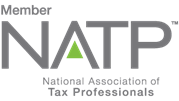The IRS recently released its list of what it refers to as the “The Dirty Dozen” and has warned taxpayers to avoid inflating deductions or expenses on their returns, triggering an audit. The Dirty Dozen is a list of common “exaggerations” among taxpayers or preparers who are found “fudging” their tax returns in order to increase their refund or pay less than what they owe. The Internal Revenue Service’s automated Service uses algorithms that are increasingly capable of noticing when deductions or business expenses are out of the norm for someone with the same job and income in the same zip code. One commonly misunderstood deduction is the charitable donation, one of the dirty dozen.
First, on the positive side, some important changes for the 2017 tax year occurred affecting charitable donations. There has been a temporary suspension of limits. Cash contributions made to a Presidentially declared disaster area are not subject to the 50% limit OR the overall limit on itemized deductions for 2017. All other itemized deductions including charitable deductions may have to be reduced based on your adjusted gross income. You can deduct contributions for flood relief, hurricane relief or other disaster relief to a QUALIFIED ORGANIZATION.
Qualified Organization:
So what is a qualified organization? Qualified organizations may be surprising and can include the United States government, your city’s police department, the social security trust fund (not earmarked for a specific account, of course), Canadian Charities, Mexican Charities and Israeli Charities in addition to the standard religious, educational, scientific, or literary charities. Any organization that works to prevent cruelty to children or animals is also considered a qualified organization.
Now for the rub. “A charitable contribution is a donation or gift to, or for the use of, a qualified organization. It is voluntary and is made without getting or expecting to get anything of equal value”. So if you donate $50 to a charity and they send you a t-shirt with a fair market value of $5. You can only deduct $45 as your charitable contribution. This is something that lots of people miss, and lots of charities offer coffee cups, blankets, hats, and t-shirts. You do not have to reduce your contribution by the value of the benefit you receive if both of the following are true: 1) you receive only a small item or other benefits of token value and 2) the qualified organization correctly determines that the value of the item or benefit you received isn’t substantial and informs you that you can deduct your payment in full.
A qualified organization must give you a written statement if you make a contribution and partly for goods and services. The statement must say you can deduct only the amount of the payment that is more than the value of the goods or services received (the amount donated less the value of the goods or services received).
You can NOT deduct contributions to specific individuals, including fraternal societies made for the purposes of paying medical or burial expenses of members; contributions to individuals who are needy or worthy. You can’t deduct these contributions even if you made them to a qualified organization for the benefit of a SPECIFIC PERSON.
If you expect to receive a financial or economic benefit as a result of making a contribution to a qualified organization, you must deduct the part of the contribution that represents the value of the benefit you receive.
You can’t take a deduction for clothing or household items you donate unless the clothing or household items are in good used condition or better OR if you deduct more than $500 for it, you must include a qualified appraisal.
If you donate a car with a fair market value of more than $500, you can deduct the SMALLER of 1) the gross proceeds from the sale of the vehicle by the organization OR 2) the vehicles fair market value on the date of the contribution.
Another technicality to remember is that the deduction does not apply until the payment has been made. If you make a contribution by check, the date of the contribution is considered to be the date the check was mailed. If you make a contribution by text, the date contribution is deductible in the year you sent the text message in. If you issue and deliver a promissory note to a charity as a contribution, it isn’t deductible until the note is paid in full. A properly endorsed stock certificate is considered delivered on the date of mailing or other delivery to the charity or the charity’s agent. However, if you give a stock certificate to your agent or to the issue corporation for transfer to the name of the charity, your contribution isn’t delivered until the date the stock is transferred on the books of the corporation.
These are just some of the ways that one can misstate their charitable contributions on their tax return. One should always seek the advice of a Tax Professional. Remember to always get a receipt and don’t overlook payroll deductions such as the United Way. Stay tuned for another dirty dozen to avoid.
If you are being audited remember that our Tax Professionals have over 25 years of experience and are ready to represent you before the IRS. Don’t face them alone. Remember that you have rights and those rights include 1) the right to raise objections 2) provide additional documentation 3) have the IRS consider any additional documentation promptly. Our Tax Professionals are here to help guide you through the tax maze.
For more information, you can contact us at 561-293-3135
We serve all 50 states and the territories of the United States.

